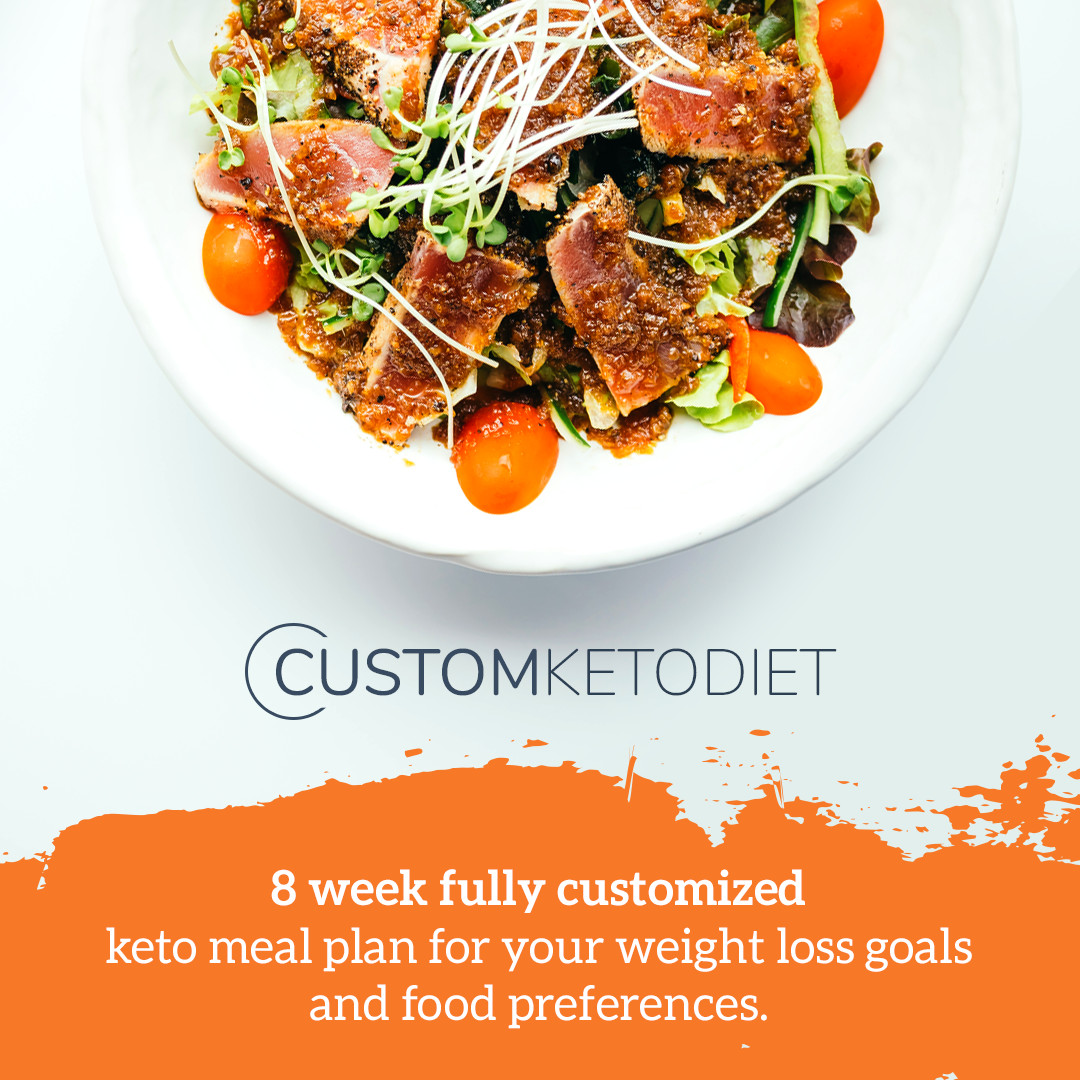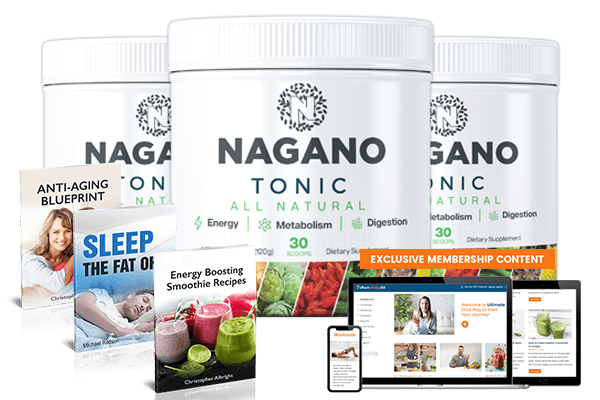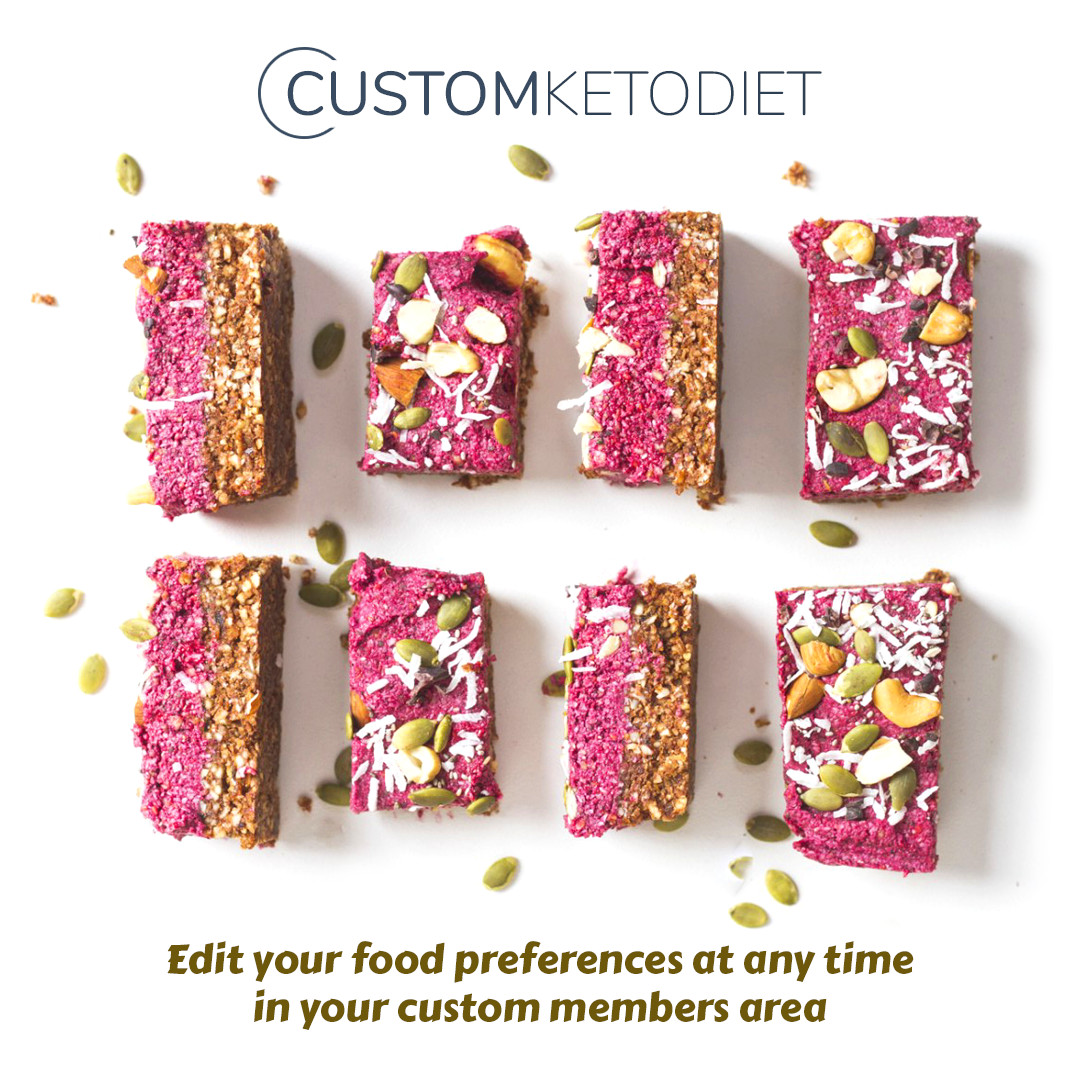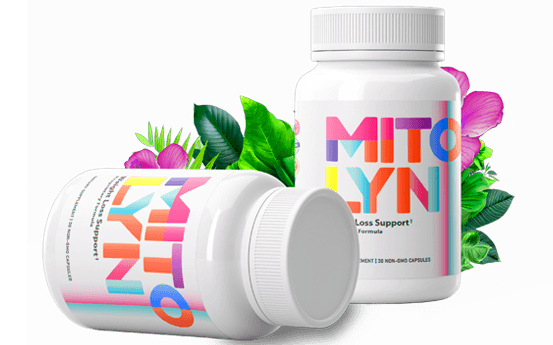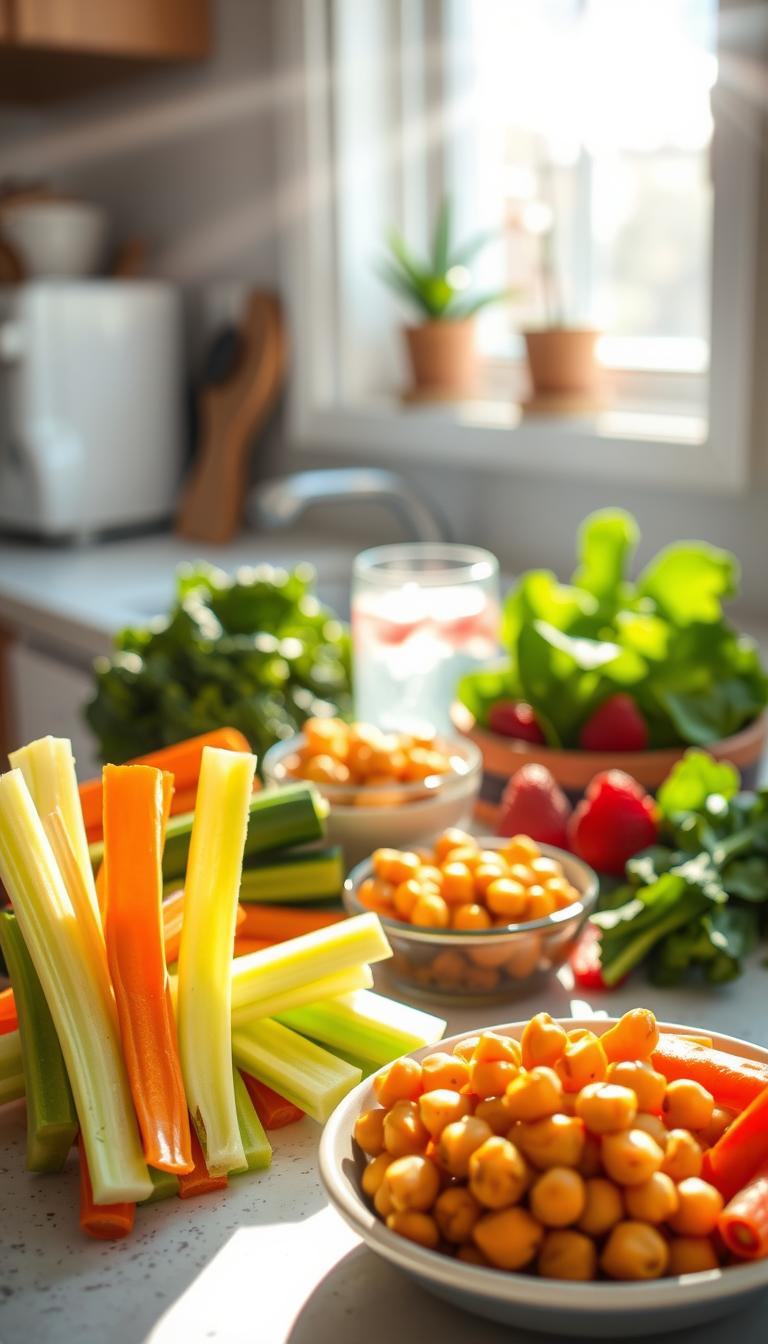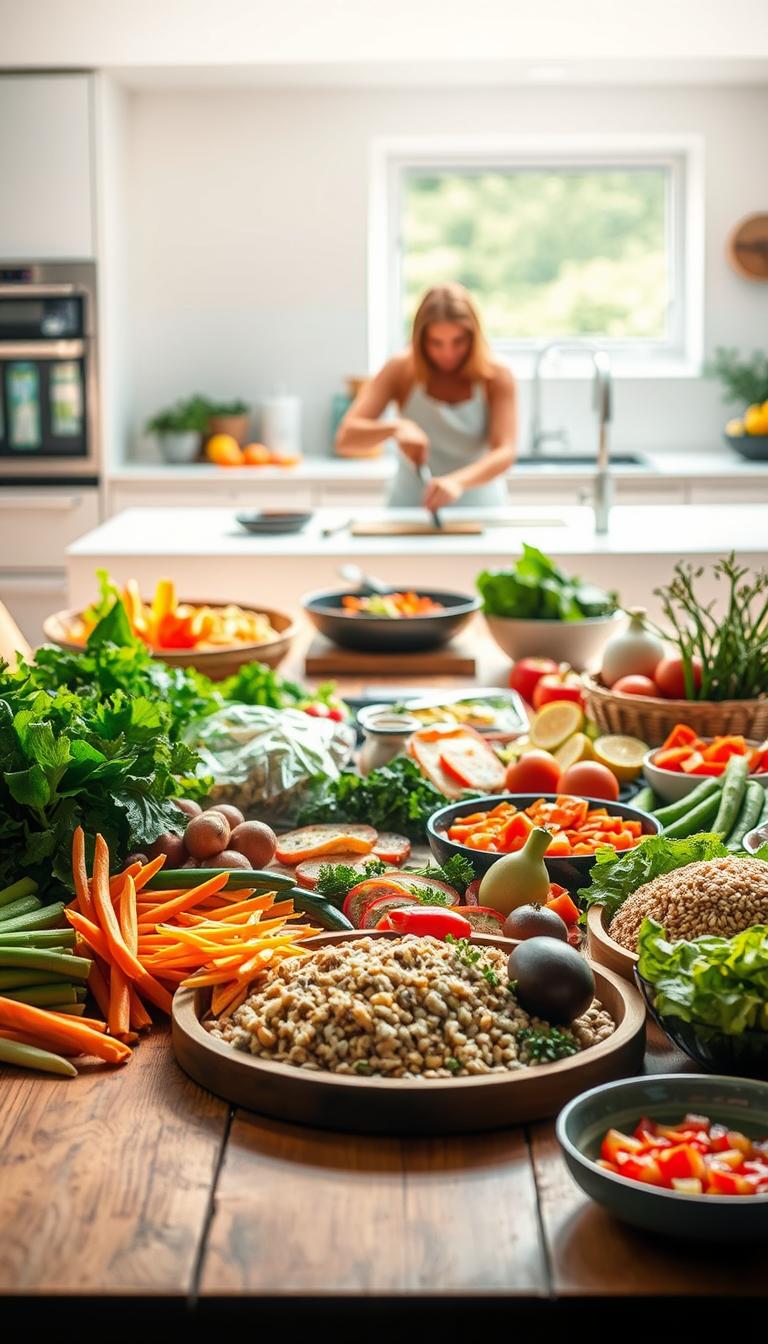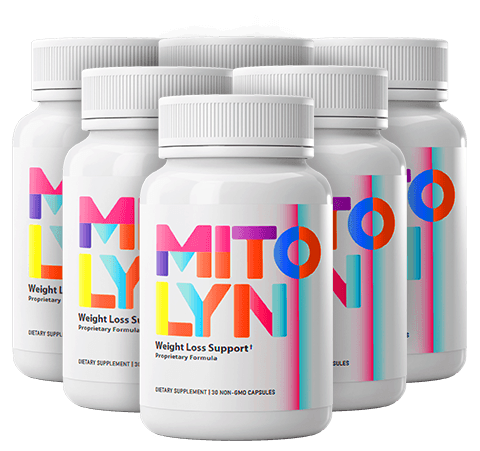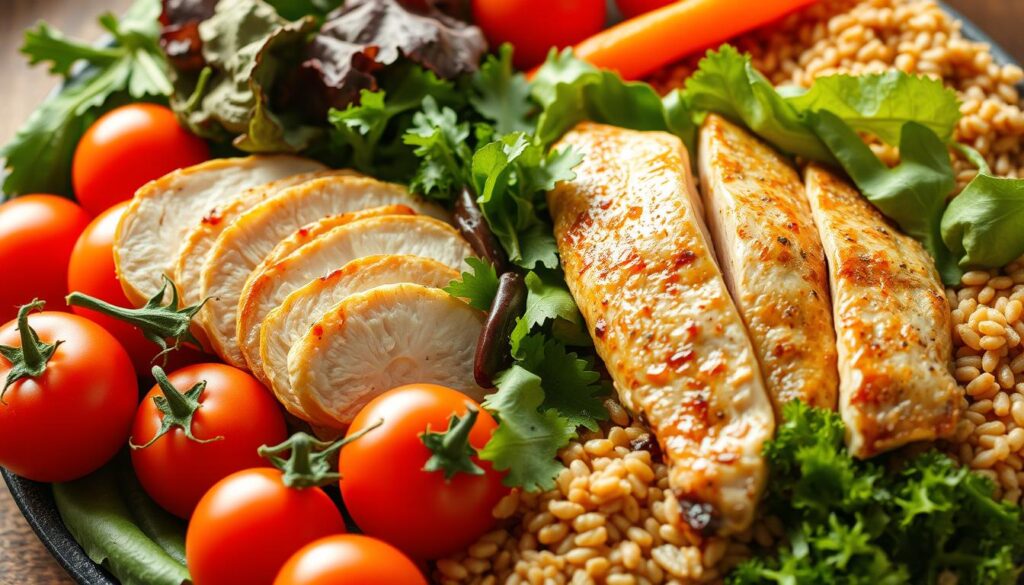
Imagine enjoying a meal that’s both comforting and healthy. That’s what healthy heart recipes offer. They nourish your body without losing flavor. Heart disease is a big killer in the U.S., so what you eat matters a lot.
These recipes aren’t just about avoiding bad foods. They’re about finding new favorites that boost your energy and protect your heart.
Each bite of these heart-healthy meals is made to taste great and be good for you. Think of dishes like Slow-Cooker Pork Chops with potatoes or Grilled Tilapia with pineapple salsa. They’re all about celebrating healthy eating.
Science supports this approach. The Mediterranean diet, loved by doctors, and omega-3s in salmon help lower cholesterol. Even small changes, like using zucchini noodles instead of pasta, can help a lot.
Key Takeaways
- Heart-healthy meals like the Mediterranean-inspired salmon salad can be ready in just 25 minutes.
- Zucchini noodles (zoodles) use soluble fiber to reduce cholesterol absorption naturally.
- The Tuscan soup recipe serves 10 while packing 10 cups of vegetables, proving hearty portions and heart health go hand in hand.
- Oranges and kale in salads boost vitamin C and fiber, lowering blood pressure and LDL cholesterol.
- Plant-based proteins like quinoa and beans offer protein without saturated fats, making heart-healthy eating versatile and satisfying.
Understanding the Connection Between Diet and Heart Health
Your heart’s health is linked to what you eat. Every bite can help or harm your heart. Eating foods that lower cholesterol and blood pressure is key. This keeps your heart healthy for life.
“A diet rich in fruits, vegetables, and whole grains reduces heart disease risk by 30%.” — 2020-2025 Dietary Guidelines for Americans
Key Nutrients That Support Your Cardiovascular System
Focus on these life-giving nutrients:
- Omega-3s: Fatty fish like salmon and flaxseeds reduce inflammation and triglycerides.
- Soluble fiber: Oats and beans trap cholesterol before it enters your bloodstream.
- Potassium: Bananas and spinach counterbalance sodium’s blood pressure effects.
- Antioxidants: Berries and dark chocolate combat cellular damage linked to heart disease.
Foods to Embrace for a Stronger Heart
Build your pantry with these heart-protective staples:
- Fatty fish twice weekly (salmon, mackerel) for omega-3s. Studies show this lowers heart disease risk by 36%.
- Whole grains like quinoa and farroo for fiber and B vitamins.
- Leafy greens and cruciferous veggies packed with nitrates to support blood flow.
- Nuts and seeds as snacks—almonds or chia seeds offer unsaturated fats and protein.
Ingredients to Limit for Better Heart Health
These adjustments matter most:
- Sodium: Aim for under 1,500mg daily. Most sodium comes from processed foods.
- Saturated fats: Keep them under 6% of daily calories (like limiting red meat servings).
- Added sugars: Choose fresh fruit instead of sugary snacks to stay under 50g daily.
- Trans fats: Avoid partially hydrogenated oils—opt for olive oil instead.
Every choice counts. Nutritious heart recipes that follow these guidelines are powerful. Small changes like choosing carrot sticks over chips or grilled salmon over fried chicken make a big difference. Your heart will thank you with better health!
The Fundamentals of Healthy Heart Recipes
Starting with healthy heart recipes means making smart choices in the kitchen. Choose cooking methods like grilling, steaming, or roasting. This keeps meals full of nutrients without extra fats. Use olive oil instead of butter, or Greek yogurt for sour cream to reduce saturated fats.
The American Heart Association suggests keeping sodium under 600mg per serving. This is easy with herbs like rosemary or garlic for flavor.

Don’t forget about portion control. Try to fill half your plate with veggies, a quarter with whole grains, and a quarter with lean proteins. Brands like Beyond Meat offer healthy heart recipes with plant-based proteins. California Walnuts are also a good choice, rich in omega-3s.
Look for the American Heart Association’s Heart-Check mark on packaged foods. It means the food meets strict nutrition standards.
- Use avocado oil for sautéing instead of lard
- Replace half the cheese in dishes with mushrooms for creaminess
- Choose quinoa or brown rice over white carbs
Quick swaps can make a big difference. Try these tips:
- Measure olive oil with a tablespoon to avoid excess
- Roast veggies with lemon juice instead of breading
- Opt for turkey bacon in breakfast dishes for less sodium
Resources like the Egg Nutrition Center’s certified recipes show how eggs can fit into balanced meals. Even small changes, like using Hass Avocado Board’s 20 certified avocado dishes, add up. With these basics, you’ll create meals that taste great while supporting heart health.
Breakfast Ideas to Kickstart Your Heart-Healthy Day
Choosing the right breakfast fuels your heart and energy. Over 68 tested recipes show that simple choices like overnight oats or avocado toast can make a difference. With 41% of these dishes highlighting heart benefits, these meals combine flavor and function.
“Individuals can safely enjoy 1-2 eggs daily without increasing cardiovascular risk,” states the American Heart Association.
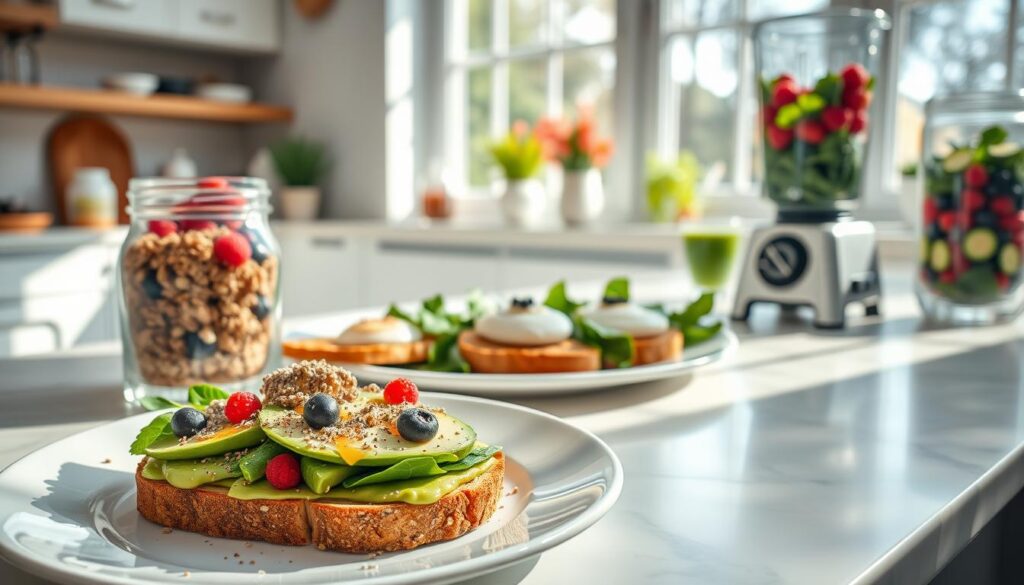
Overnight Oats with Heart-Boosting Berries
Blend oats with almond milk and chia seeds, then refrigerate overnight. Top with antioxidant-rich berries like blueberries or strawberries. Oats lower cholesterol, while chia seeds add omega-3s. Try adding a tbsp of peanut butter for protein. Over 12 recipes feature this combo, rated 4.4/5 on average.
Avocado Toast with Mediterranean Toppings
Spread mashed avocado on whole-grain toast. Add cherry tomatoes, kalamata olives, and a drizzle of olive oil. Avocado’s monounsaturated fats support heart health, backed by 2023 research. Swap eggs for a fried option (up to 2 daily) or top with smoked salmon for omega-3s.
Heart-Healthy Smoothie Combinations
Blend spinach, frozen berries, and unsweetened almond milk. Add a scoop of protein powder or Greek yogurt for staying power. Kefir’s probiotics boost digestion, while flaxseeds add fiber. These smoothies earned 4.4/5 ratings, with 28 recipes scoring 4.5+ for their balance of nutrients.
With quick prep times and ingredient swaps, these meals fit busy schedules. Prioritize whole grains, plant-based proteins, and seasonal produce for variety. Small changes today build long-term heart wellness.
Nutritious Lunch Options That Support Cardiac Health
Eat smart at lunch with meals that are good for your heart. These cardiac diet recipes are full of fiber, omega-3s, and balanced nutrients. They keep you full and healthy. Here are some easy ways to make lunches that fit your busy life:
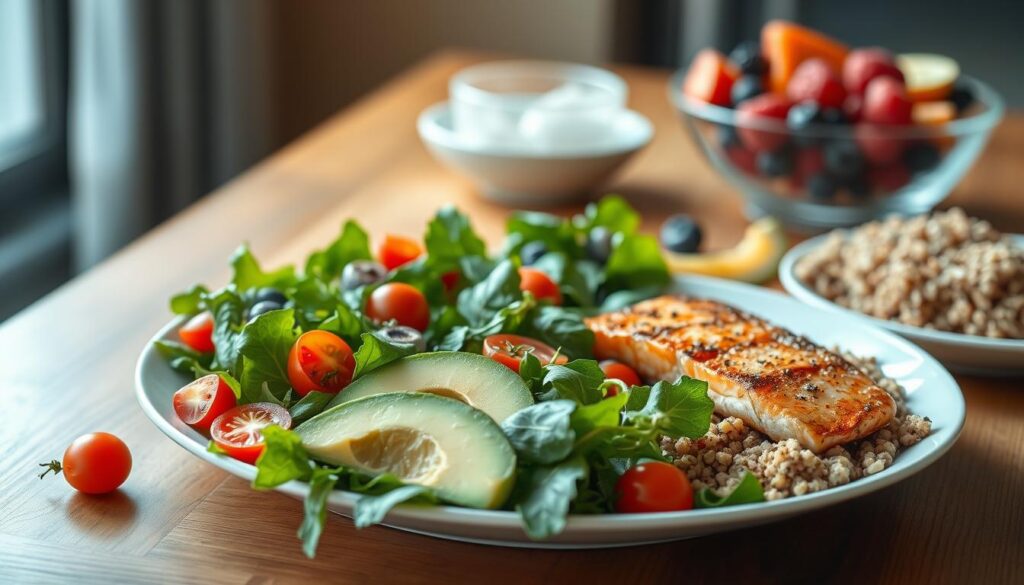
“Aim for meals with 25-30g of fiber daily—these recipes help you reach that goal,” says the American Heart Association.
Quick Grain Bowls Packed with Heart Protectors
Choose whole grains like quinoa or farro instead of refined carbs. Try this quick recipe:
- Base: ½ cup cooked quinoa or brown rice
- Protein: Grilled shrimp or roasted chickpeas
- Vegetables: Roasted zucchini, spinach, or roasted beets
- Top with avocado slices or a drizzle of tahini
Prep grains and proteins early for a quick lunch.
Colorful Salads with Omega-3 Rich Ingredients
Add walnuts, flaxseeds, or canned salmon to your salads for omega-3s. Try this fast option:
The lentil salad with apple and feta has 26g protein and 8g fiber. Use olive oil and vinegar instead of store-bought dressings to cut sodium. Meal-prepped kale salads stay fresh for 4 days in airtight containers.
Hearty Soups That Nurture Your Cardiovascular System
Make a big batch of minestrone soup with cannellini beans and spinach. Each bowl has 6g protein and 4g fiber. Add a slice of whole-grain bread for a full meal.
For quick meals, try pre-cooked sweet potatoes with black beans and salsa. These cardiac diet recipes save time without losing nutrition. Mix these parts to make lunches that match your taste and schedule!
Delicious Healthy Heart Recipes for Dinner
Heart-healthy meals don’t have to be slow or tasteless. These nutritious heart recipes show you can make dinner fast and tasty. Think of salmon with white miso, shrimp stir-fries with garlic and spinach, or sweet potato boats with black beans. All are under 600 mg sodium per serving.
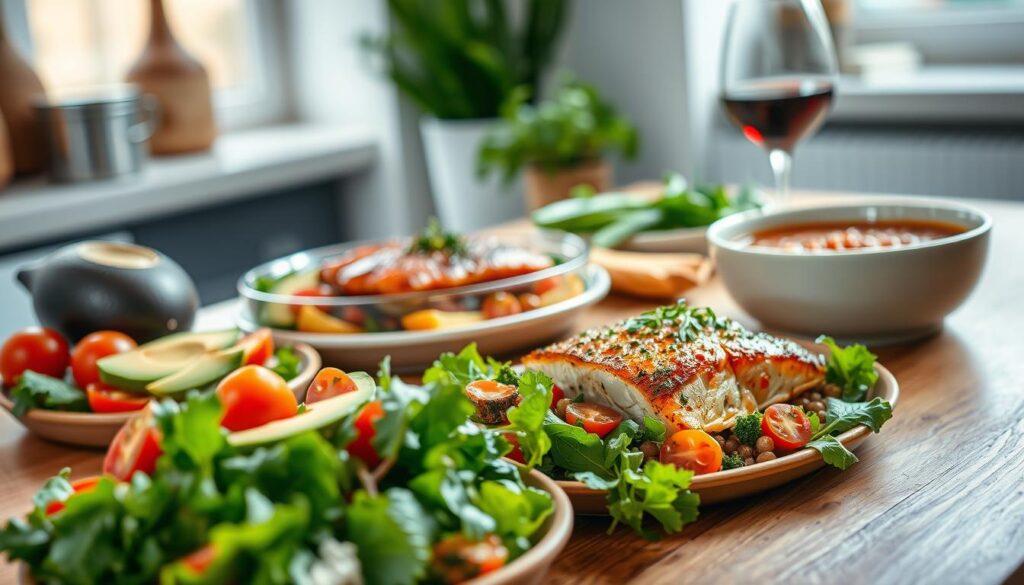
| Recipe | Prep Time | Sodium (mg) | Saturated Fat (g) | Ratings |
|---|---|---|---|---|
| Salmon with White Miso | 20 mins | 450 | 1.5 | 4.8/5 |
| 5-Ingredient Stuffed Sweet Potato | 15 mins | 520 | 2 | 4.7/5 |
| Shrimp & Pesto Quinoa Bowls | 25 mins | 580 | 3 | 4.5/5 |
These meals focus on taste with herbs, citrus, and low-sodium sauces. More than 80% include veggies like spinach and bell peppers. For example, the shrimp stir-fry has 4 grams of saturated fat per serving, great for weeknights. Even steak lovers can enjoy seared sirloin with roasted Brussels sprouts in 20 minutes.
Try the nutritious heart recipes with an average rating of 4.4/5. Over two-thirds of dishes have 4.5 stars or higher. The 5-ingredient sweet potato recipe is a hit, with black beans, corn, and salsa. There are 7 vegetarian options and 3 freezer-friendly dishes for everyone. Lean proteins like tofu or tilapia go well with colorful veggies for balanced meals.
Low Cholesterol Dishes That Don’t Sacrifice Flavor
Low cholesterol cooking doesn’t mean you have to give up taste. You can make meals that are both delicious and good for your heart. By making small changes, like using different ingredients and cooking methods, you can make a big difference.
Plant-based foods and lean proteins are great for flavor without the bad fats. They help keep your heart healthy.
Broccoli’s glucoraphanin can reduce LDL cholesterol by 13%, adding it to dishes boosts both nutrition and taste.

Plant-Based Alternatives to High-Cholesterol Favorites
Make old favorites new again with plant-based swaps:
- Black bean burgers: Blend black beans with oats and spices for a meatless patty.
- Mushroom ‘meatballs’: Sauté mushrooms and breadcrumbs for a savory bite.
- Chickpea tuna salad: Mash chickpeas with dill and lemon for a creamy texture.
Broccoli’s fiber and antioxidants help lower LDL cholesterol naturally. They pair well with these dishes.
Lean Protein Preparations for Heart Wellness
Lean proteins are great with bold flavors:
- Flank steak: Marinate in citrus juices and garlic before grilling.
- Salmon fillets: Bake with lemon and dill to highlight omega-3 benefits.
- Chicken breast: Roast with rosemary and olive oil spray.
Salmon’s omega-3s fight inflammation. Flank steak is low in saturated fat, making it a smart choice.
Heart-Smart Cooking Techniques
Try these methods to boost flavor without added fats:
- Grilling: Adds smoky flavor without oils.
- Poaching: Tenderizes proteins gently in broth or wine.
- Rosting: Brings out natural sweetness in veggies like broccoli and tomatoes.
Use garlic, paprika, or balsamic vinegar to add depth without saturated fats.
Every choice you make matters. By focusing on these strategies, you can make meals that are both tasty and heart-healthy. Whether you swap beans for beef or grill instead of fry, you can enjoy delicious and healthy meals.
Snacks and Appetizers for Your Heart-Healthy Lifestyle
Heart-healthy meals don’t mean you have to give up taste or ease. Snacks and appetizers can be as good as meals if they’re full of fiber, healthy fats, and antioxidants. Here are some tips to keep your cravings satisfied while supporting your heart:

- Roasted Cauliflower Hummus: Mix roasted cauliflower, walnuts, and lemon juice for a tasty dip. It’s a healthier choice than regular hummus, with less carbs but still lots of vitamin C.
- Stuffed Mushrooms: Fill mushrooms with quinoa, garlic, and spinach. Bake until soft. This dish is under 250 calories per serving.
- Air-Fried Sweet Potato Chips: Thinly slice sweet potatoes, toss with olive oil spray and cinnamon. Air-fry at 400°F for 15 minutes. They’re healthier than fried chips but just as tasty.
- Spiced Nuts: Mix almonds or pistachios with smoked paprika and maple syrup. A ¼-cup serving is full of healthy fats and 3g of fiber.
“Eating a variety of colorful fruits and vegetables can reduce inflammation and lower heart disease risk.” – American Heart Association
Enjoy veggies like carrot sticks or cherry tomatoes with a yogurt dip. Choose roasted edamame or kale chips over regular chips. Even small changes help a lot: switching one high-sodium snack a day can cut sodium by 400+ mg weekly.
Try mini avocado boats with tuna salad or mashed chickpeas for a protein-packed snack. For parties, offer platters with marinated olives, low-fat cheese, and whole-grain crackers. Slice veggies ahead of time and store them in airtight containers. This makes it easier to make healthy choices when you’re hungry.
Be mindful of your portions. A small handful of almonds, 1/2 cup of berries, or 1 oz of low-sodium jerky is enough. With these tips, snacking can be a part of your heart-healthy lifestyle, not a sacrifice.
Meal Prep Strategies for Consistent Cardiac Nutrition
Adding nutritious heart recipes to your daily life is easy. Start by planning your meals for the week. This keeps your heart health goals in sight. A simple plan helps you focus on good foods like lean proteins, whole grains, and leafy greens.
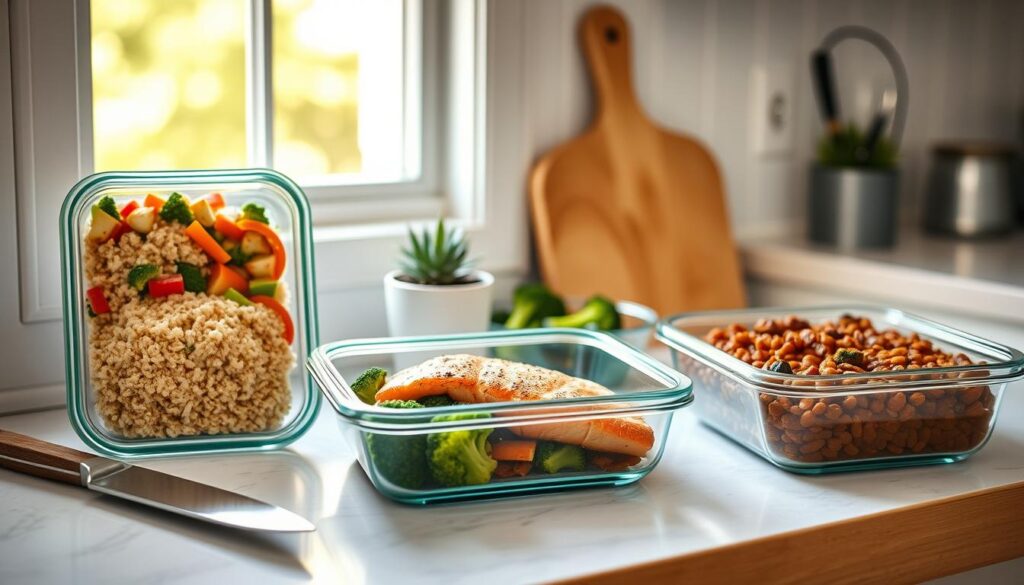
Weekly Planning Made Easy Start by picking 3-4 main dishes for the week. Pair them with sides from the same list. For example, grilled salmon is great for dinner and salads the next day. The American Heart Association (AHA) says this helps cut down on bad fats and boosts omega-3s.
- Use a template grouping meals by protein type (fish, legumes, poultry)
- Align recipes with seasonal produce to save costs and freshness
Storage Tips for Maximum Nutrition Prep ingredients in advance but store them smartly. Chop veggies in airtight containers with a damp paper towel to stay crisp. Freeze cooked grains like quinoa or brown rice in single portions—they retain nutrients longer than refrigeration. The DASH diet’s success relies on these methods, keeping meals consistent and heart-friendly.
Time-Saving Shortcuts – Batch-cook staples: Simmer lentils or beans in a slow cooker while running errands.
– Use pre-chopped veggies (look for no-salt-added brands) for quick stir-fries or soups.
– Freeze pre-marinated proteins in portions—grill or bake in 20 minutes on busy nights.
The AHA notes that even small changes, like swapping 100g of fish for red meat weekly, can lower heart risks. Prioritize convenience without compromising nutrition. Your heart—and your schedule—will thank you.
Adapting Family Favorites into Heart-Friendly Versions

Changing old favorites doesn’t mean losing flavor. Swapping half the ground beef in sloppy joes with beans cuts saturated fat. It keeps the taste you love. Here are some tips to make comfort foods healthier:
| Classic Ingredient | Heart-Healthy Swap |
|---|---|
| White flour | Whole wheat or almond flour |
| Butter | Avocado puree or Greek yogurt |
| Cream-based sauces | Pureed vegetables (like cauliflower or spinach) |
Make classics better with zucchini crust pizza. Use thinly sliced veggies instead of regular dough. Turkey meatloaf with mushrooms adds fiber and cuts saturated fat. Butternut squash makes mac ‘n’ cheese creamy without heavy cream.
- Involve kids in choosing new toppings for veggie-based pizzas
- Pair hearty lentil loaf with classic sides like mashed cauliflower
- Gradually reduce salt by adding herbs like garlic or rosemary
Try Golden Butternut Squash Lasagna with spinach noodles for a creamy texture without dairy. These changes make meals familiar yet healthier. The American Heart Association says these swaps are good. They keep meals under 400 calories, add fiber, and boost lean proteins.
Conclusion: Nourishing Your Heart One Meal at a Time
Every bite you take is important for your heart health. The cardiac diet recipes we’ve looked at show how small meal changes can help a lot. These changes are part of a long journey, not a quick fix.
Studies show that eating berries, salmon, quinoa, and legumes can lower cholesterol and heart disease risk. For instance, the Mediterranean diet can reduce heart events by 30%. The DASH diet also lowers blood pressure a lot. This shows how food choices affect our health.
Changing your diet doesn’t mean you have to give up taste. Try using olive oil instead of butter, or chickpeas instead of processed snacks. Even just one meal a week of heart-healthy foods like oatmeal or Greek yogurt can help.
Most Americans don’t eat as heart-healthy as they should, but starting today can change that.
Start with small goals. Maybe try a quick heart-boosting smoothie or a salmon dinner. Every choice you make helps. If you slip up, just go back to the basics.
Over time, these steps can reduce inflammation, stabilize blood sugar, and protect your arteries. The American Heart Association says it’s about being consistent, not perfect. Every meal is a chance to make your body healthier.
Use the cardiac diet recipes we’ve shared to start your own journey. Whether it’s a quick grain bowl or a weekend meal prep, every mindful choice helps your heart. Start with what feels doable. Your heart and future self will be grateful.

